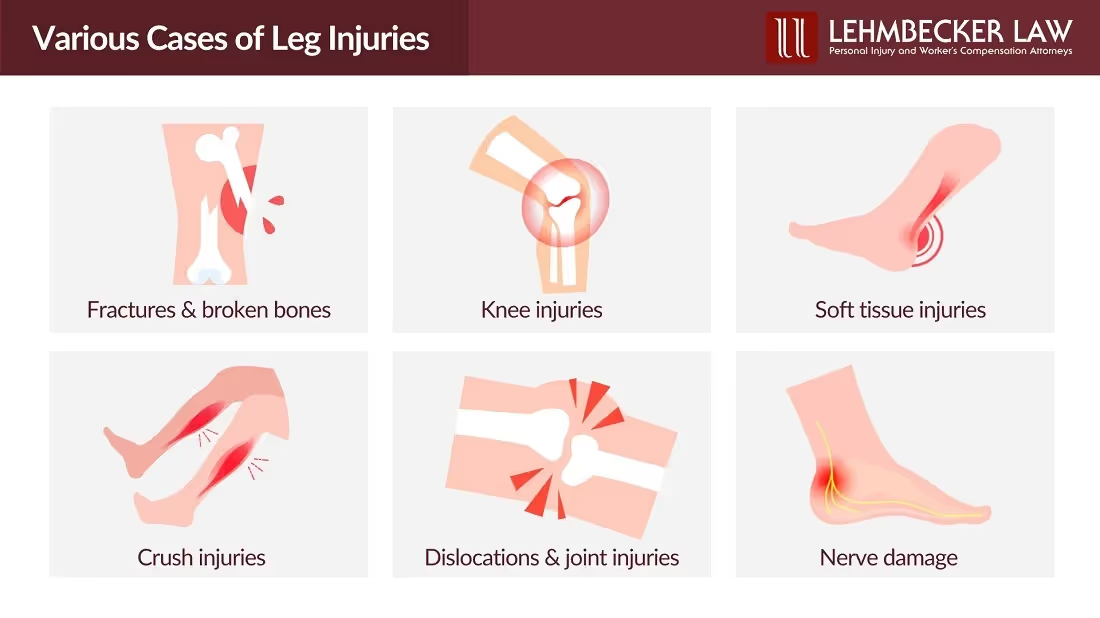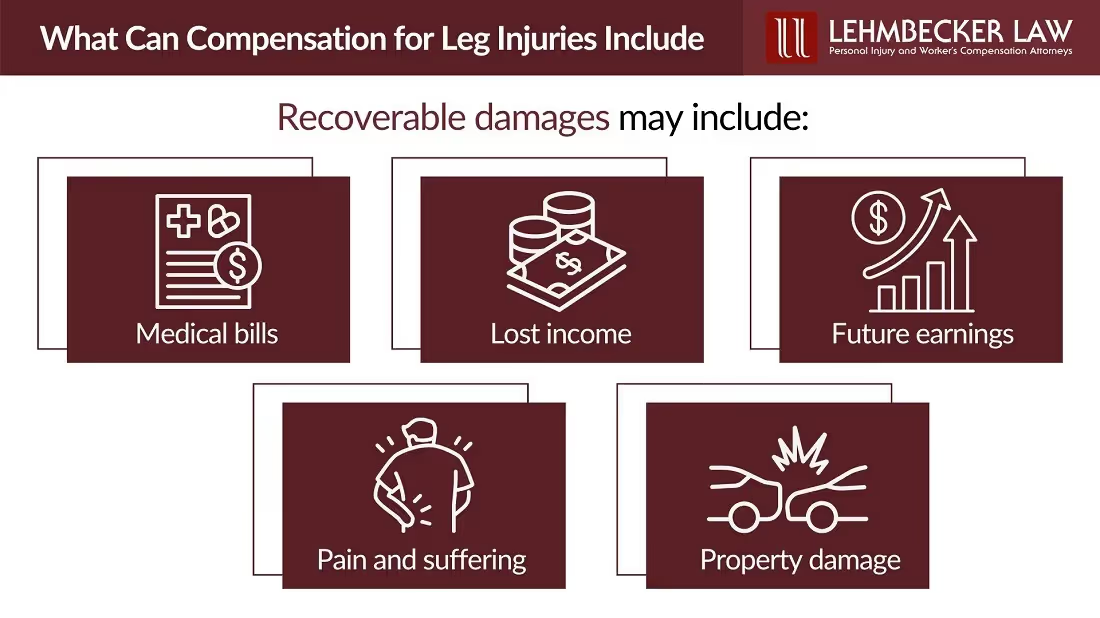There is no fee unless we win!
EN

- EN
- ES


One moment, everything feels normal — you're sitting in traffic, listening to music, thinking about your day. The next, a violent impact jolts you, and excruciating pain shoots through your leg. Car accidents happen all the time, but some injuries can linger for months or even years. Among the most painful and life-altering injuries are those to the legs. Leg injuries steal your independence, your ability to work, to walk, to live the life you knew.
Whether it's a side-impact collision, head-on crash, or rear-end accident, your legs are vulnerable to severe trauma due to their position in the vehicle. If you’ve been hurt in a crash, speak with our Seattle car accident lawyers, who have decades of experience winning cases for people seriously injured in automobile accidents. We will do everything in our power to get you the compensation you deserve.
Leg injuries happen a lot in car crashes — especially in frontal collisions, and the numbers back it up. According to the National Highway Traffic Safety Administration (NHTSA), injuries below the knee are some of the most frequent in these types of crashes, and they often lead to long-term issues like mobility problems and chronic pain.
In fact, NHTSA research found that injuries to the knee-thigh-hip area make up about 55% of all Abbreviated Injury Scale (AIS) 2+ lower extremity injuries, and they account for 42% of the total life-years lost due to leg trauma in crashes.
Leg injuries are so common to drivers in auto accidents because a driver’s legs are positioned directly under the dashboard and steering column — meaning they’re at the front line when a crash happens. The force of a car collision can slam your knees into the dash, twist your hips awkwardly, or crush your legs entirely under debris. Even minor fender-benders can cause soft tissue injuries or bruising, while more severe crashes can lead to broken bones, ligament injuries, or long-term chronic pain.

Let’s break down the types of leg injuries most often seen in auto accident victims:
The thigh bone (femur), leg bones (tibia and fibula), and kneecap (patella) are highly vulnerable. A broken leg may be obvious or hidden as a hairline fracture, only detected through imaging. Crush injuries from high-impact crashes may require surgery, pins, or rods.
The knee joint is complex and fragile. Damage to the anterior cruciate ligament (ACL), posterior cruciate ligament (PCL), or medial collateral ligament (MCL) can cause instability and severe pain. A meniscus tear is another common knee injury, leading to swelling, locking, and long recovery periods.
These include muscle injuries, sprains, and strains. They may not show up on X-rays but can cause leg pain, stiffness, and reduced mobility. Left untreated, they may worsen over time.
If your legs are trapped under the dashboard or door after a car crash, you may suffer tissue and nerve damage that leads to complications like compartment syndrome, which can be life-threatening.
The hip, knee, or ankle joints may be dislocated during a crash, often requiring surgical intervention and physical therapy to regain function.
In some cases, leg injuries from car accidents lead to long-term nerve issues, causing numbness, tingling, or chronic pain in the affected leg.
Even if you feel no immediate pain, there can be hidden injuries — internal damage or soft tissue injuries that can be easy to miss without a medical exam.
Lacerations are deep cuts caused by broken glass, metal, or debris. Although they may seem minor at first, they can lead to infection, nerve damage, or permanent scarring if not treated quickly. Some may require stitches or even surgery to close the wound properly.
If you've been hurt, your first priority should be medical treatment — even if your symptoms seem mild at first.

Yes — if another driver’s negligence caused your crash, you may be eligible to recover medical expenses, lost wages, and money for pain and suffering through a personal injury lawsuit or auto accident claim.
Recoverable damages may include:
It happens often. An insurer may question the extent of your car accident injuries or push for a quick, lowball settlement, especially with soft tissue or lower leg injuries. Their goal is to pay you as little money as possible. Our job is to force them to be accountable. That’s why it’s important to have a skilled personal injury attorney review your case.

When you’re recovering from injuries sustained in a car accident, the last thing you should deal with is an aggressive insurance company or confusing legal forms. In some cases, serious leg injuries can even lead to a disabling condition that impacts your ability to work or live independently.
A professional car accident attorney can help by:
In Washington, car accident victims have three years from the date of the crash to file a personal injury lawsuit. The statute of limitations for injured children is three years from their 18th birthday. But you should never wait to contact our lawyers. The sooner we can begin working for you, the better your case will turn out.
Leg injuries can affect your ability to walk, work, and live a normal life — especially when left untreated or dismissed by insurers. Don’t tough it out alone.
Lehmbecker Law’s Washington car accident attorneys help clients across the state, fighting for their right to be compensated for their injuries. Our legal team understands how serious these injuries are and how aggressively insurers try to minimize them.
If you've suffered leg injuries from a car accident in Washington, and your case needs more than just an average lawyer, don’t wait. Help is a quick phone call away. Contact Lehmbecker Law today for a free consultation and get the trusted legal support you need to take the next step.

Our skilled personal injury lawyers have decades of experience fighting for victims suffering from leg injuries, back and neck injuries, and more. Let us help you recover the compensation you deserve.
If you’re experiencing intense pain, swelling, inability to walk, or numbness, it could be a sign of a fracture, ligament tear, or nerve damage. Always seek medical attention after an accident.
Yes. Even if your injury isn’t visible on imaging, you may still be entitled to compensation for pain, lost work time, and medical care.
In most cases, workers' compensation settlements aren’t taxable at the federal or state level. These settlements are generally considered non-taxable income, which ensures that injured workers receive the full financial support they need.